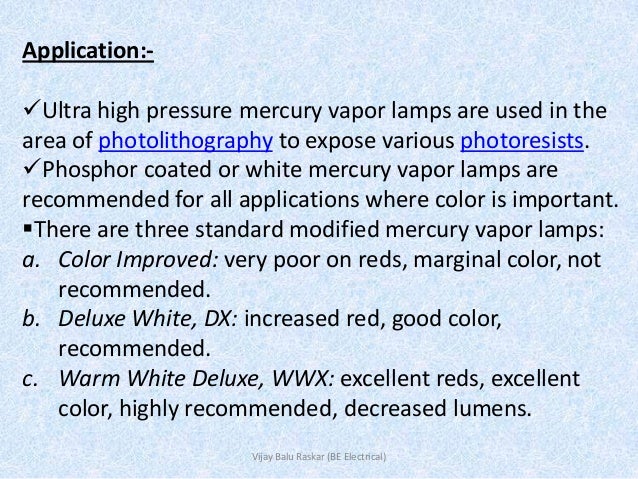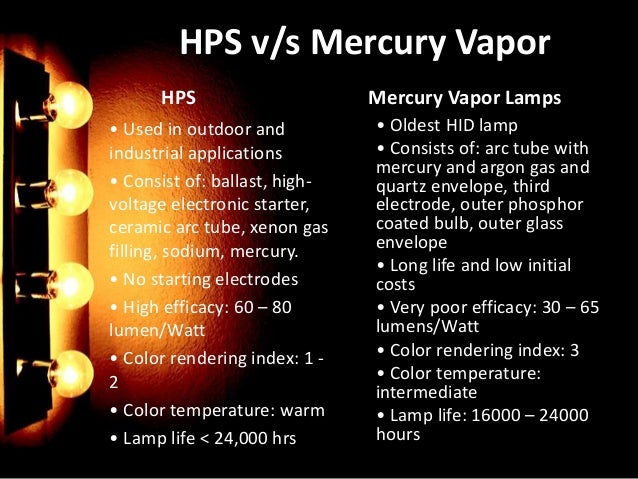The mercury vapor fluorescent lamps can be either of low pressure lp or medium pressure mp i e gas pressure inside the lamp with nominal power that may vary in the ranges 4 115 w and 400 17 000 w philips 2017 respectively.
High pressure mercury vapour lamp applications.
High pressure mercury vapor arc lamps a type of high intensity discharge lamps are operated with a pressure of the order of one atmosphere and with much increased power densities so that more mercury is evaporated the high density of the vapor allows for light emission with a much higher radiance.
In 1860 john thomas way used arc lamps operated in a mixture of air and mercury vapor at atmospheric pressure for lighting.
The german physicist leo arons 1860 1919 studied mercury discharges in 1892 and developed a lamp based on a mercury arc.
In such lamps there is also much stronger spectral broadening.
Because mercury lamps are so prevalent in current outdoor lighting and still safe when properly installed in a serviceable fixture the need for these products will.
While many applications are ideal for mercury vapor lamps they are being challenged by the higher efficiency and better color balance of metal halide.
Mercury vapor lamps have found the greatest use in industrial applications and outdoor lighting because of their low cost and long life and lamp sizes of up to 1 000 watts.
Two varieties of such lamps exist.
A sodium vapor lamp is a gas discharge lamp that uses sodium in an excited state to produce light at a characteristic wavelength near 589 nm.
This phosphor technology offers better color rendition than the more efficient high or low pressure sodium vapor lamps but still falls short of metal halide and ceramic metal halide sources.







.jpg)

